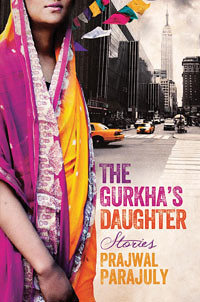When Prajwal Parajuly’s The Gurkha’s Daughter rapidly flew off the shelves (it’s already in its first reprint) and garnered rave reviews everywhere, readers were left with one burning question: is it really that good? Basically, yes, yes it is.
The Gurkha’s Daughter is a collection of short stories that depicts the life of average Nepalis and those of Nepali-origin spread from Kathmandu to Kalimpong and Gangtok to New York. Summaries of the stories may not compel you to buy the book—a young cleft-lipped housemaid considering running away in her quest for the Bollywood dream, the daughter of a wealthy family stealing, a disintegrating father-daughter relationship - which all, in some form or another, address common topics of caste, culture, identity, and our society.
So what then makes Parajuly standout? The most obvious: he is talented and uses novel modes of presentation. He doesn’t waste time inking the beauties of the Himalayan landscape, but rather focuses on the characters, the true heroes of his stories. Unlike some master storytellers, Parajuly may not leave you drooling over particular ensembles of words; on the contrary, his style is so simplistic that it would fail to impress if the words weren’t executed to perfection. To his credit, he doesn’t just write. He writes incredibly well.
Though there is some criticism to be made about the almost unoriginal content (how many more stories of low/middle-class Nepalis are we going to have to read?), Parajuly manages to succeed where many have failed: his stories are actually convincing. While others have attempted to tell the tale of everyday lives, Parajuly portrays characters and scenarios that Nepalis can identify with, non-Nepalis can learn from without being misled, and that everyone can enjoy. There is no selling out, no vanity, or pretence—all of the stories are absolutely believable.

At first, the tales may leave you unsatisfied—one questions if the author didn’t reach the depths he could have. But it becomes quickly apparent that wanting more is the carefully crafted effect of realistic characters who instill emotional attachments. And this is where Parajuly collects another brownie point—it’s surprising how fast one forgets the writer. The man behind the words ceases to exist as story after story, each character—be it little girls in their world of play, young men begrudgingly accommodating extended families, or a shamed Nepali-Bhutanese woman seeking asylum in the US—lingers long after the book ends.
For Parajuly, when his debut novel, The Land Where I Flee, releases next year, his biggest challenge will be to match the tremendous expectations of his readers.
Shreya Thapa
The Gurkha’s Daughter
Prajwal Parajuly
Publisher Quercus
Pages: 272
Rs 800